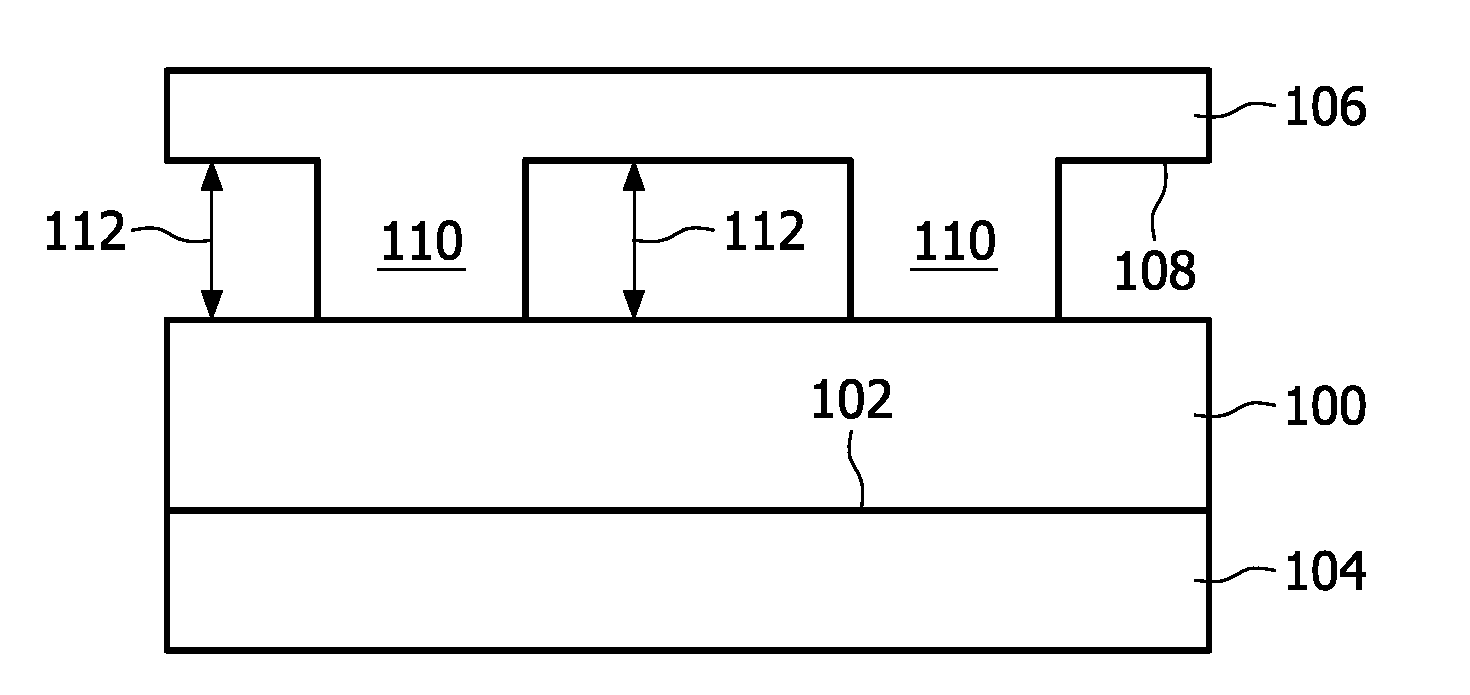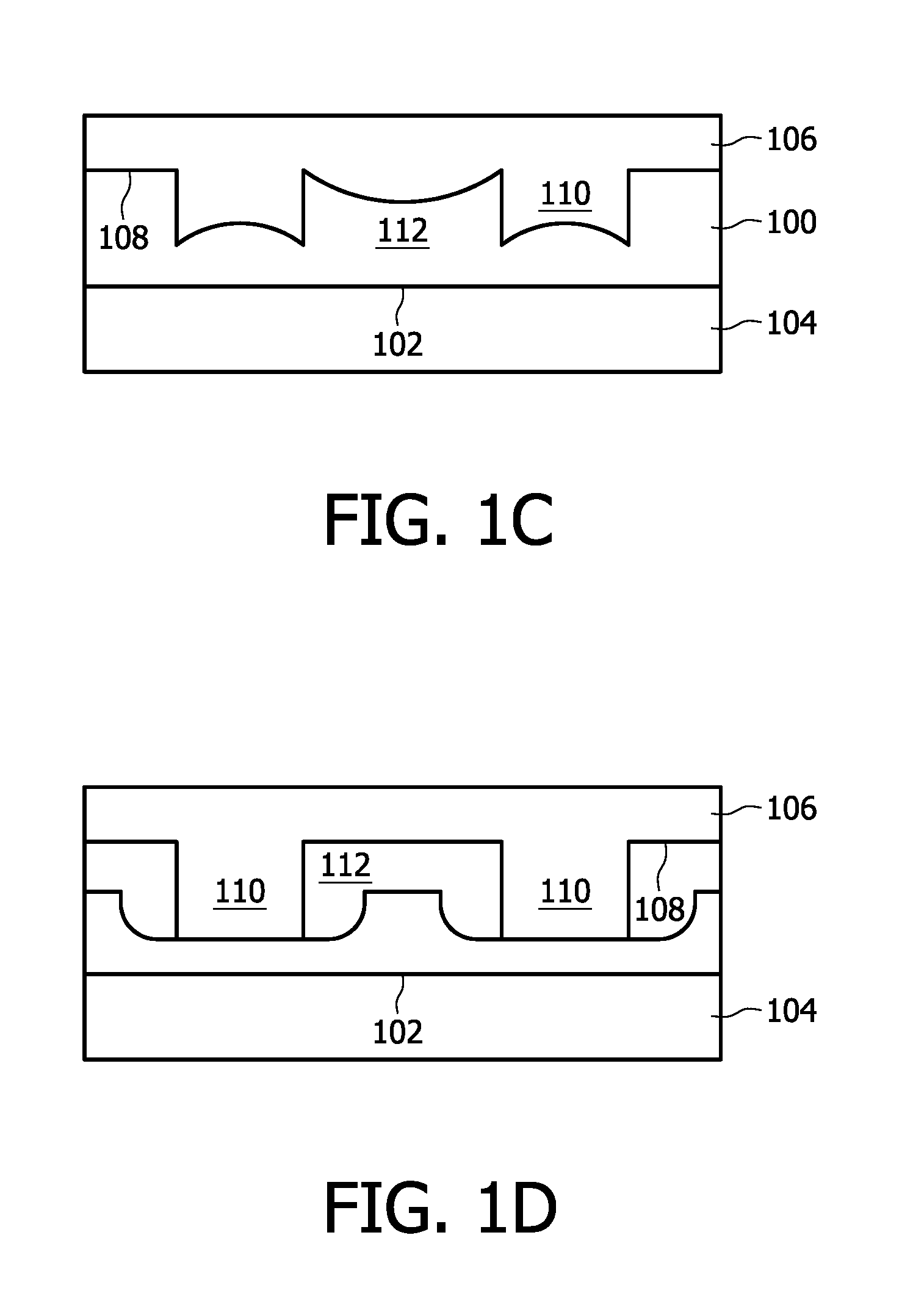Relief layer and imprint method for making the same
a relief layer and imprinting technology, applied in the field of relief layer and imprinting method, can solve the problem of layer becoming not patternable, and achieve the effects of maintaining shape fidelity, relatively high stability of relief layer comprising such groups, and little shrinkag
- Summary
- Abstract
- Description
- Claims
- Application Information
AI Technical Summary
Benefits of technology
Problems solved by technology
Method used
Image
Examples
example 1
[0042]A first siliconoxide compound solution according to the invention is prepared by mixing together 8 gram of Ludox™ TM-50, comprising 50 weight % silica nanoparticles having a particle diameter inbetween 20 nm and −40 nm in water with 1.2 gram of formic acid under stirring. Subsequently, 0.9 gram of Methyltrimethoxysilane (MTMS) is added and the resulting mixture stirred at room temperature for 15 minutes. An additional 6.9 grams of MTMS is added under stirring and the resulting solution is left to stand for 30 minutes at room temperature. Finally 1.7 gram of ethyleneglycolmonobutylether is added. The PH of the resulting silicon compound solution as measured with litmus paper is in between 3.5 and 4.5.
example 2
[0043]A second silicon compound solution according to the invention is prepared by mixing together the silicon compounds precursors MTMS and tetramehoxysilane (TMOS) in a molar ratio as given in table I. In a second step 1M formic acid in water is added to the mixture to an amount of 1 mole water per mole of methoxy-groups of the total added amount of silicon compound precursors. The resulting mixture is allowed to react, undergoing hydrolysis and condensation for period of 10 min. to 30 min. at a temperature between 20° C. and 30° C. in order to form a siliconoxide compound. Then to the mixture is added n-propanol such that the resulting silicon compound solution contains a total Silicon atom concentration of 0.8 mol per kilogram solution. In a final step, water is added to the mixture to an amount of 9 times the total silicon atom content in moles to obtain the silicon compound solution according to the invention.
TABLE ITMOSMTMSWeight % CH3Volume % CH3ExperimentmoleMolein relief l...
example 3
[0045]A third siliconoxide compound solution according to the invention is prepared by mixing together the silicon compounds precursors MTMS and TMOS in a molar ratio as given in table I. Then n-propanol is added to dilute the mixture before in a second step 1M formic acid in water is added to the mixture to an amount of 1 mole water per mole of methoxy-groups of the total added amount of silicon compound precursors. After the addition the resulting mixture is allowed to react, undergoing hydrolysis and condensation for period of 10 min. to 60 min. at a temperature between 20° C. and 30° C. in order to form a siliconoxide compound. In a third step additional n-propanol is added such that the resulting siliconoxide compound solution contains a total silicon atom concentration of 0.8 mol per kilogram solution. In a final step water is added to the mixture to an amount of 9 times the total silicon atom content in moles within the mixture to obtain the siliconoxide compound solution acc...
PUM
| Property | Measurement | Unit |
|---|---|---|
| diameter | aaaaa | aaaaa |
| temperatures | aaaaa | aaaaa |
| particle diameter | aaaaa | aaaaa |
Abstract
Description
Claims
Application Information
 Login to View More
Login to View More - R&D
- Intellectual Property
- Life Sciences
- Materials
- Tech Scout
- Unparalleled Data Quality
- Higher Quality Content
- 60% Fewer Hallucinations
Browse by: Latest US Patents, China's latest patents, Technical Efficacy Thesaurus, Application Domain, Technology Topic, Popular Technical Reports.
© 2025 PatSnap. All rights reserved.Legal|Privacy policy|Modern Slavery Act Transparency Statement|Sitemap|About US| Contact US: help@patsnap.com



